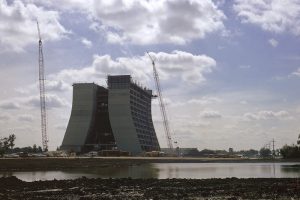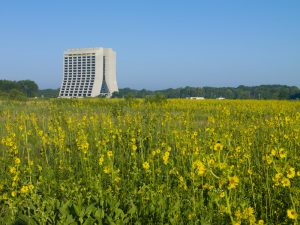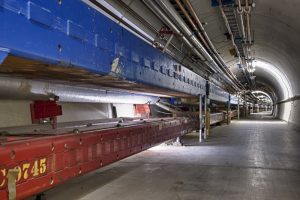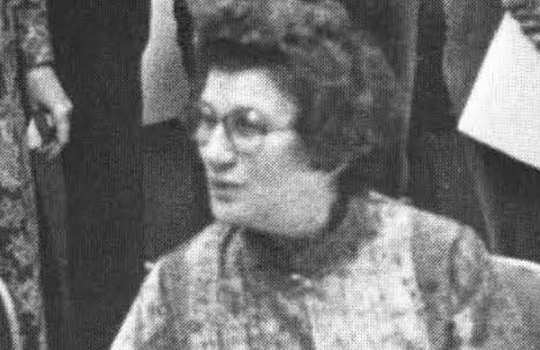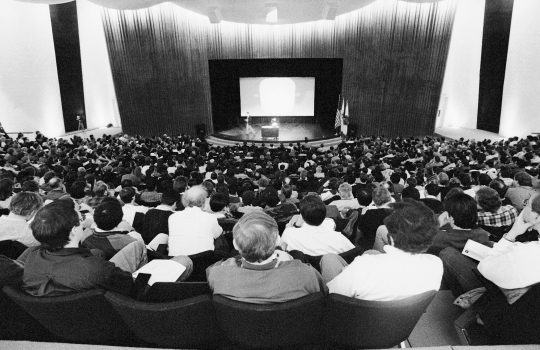Plans for a new accelerator laboratory began in April 1963. Subsequent Aprils brought the completion of the Central Laboratory Building, the installation of the final Main Ring magnet and other important milestones. Read on.
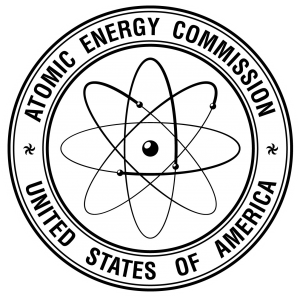
Atomic Energy Commission logo. Credit: Wikimedia
April 1963: Plans for a new lab
Physicists had discussed the need for a new accelerator laboratory in the United States for years before the Atomic Energy Commission (the predecessor to the Department of Energy) built the National Accelerator Laboratory, which would later be named Fermilab. These early discussions culminated in a report published in April 1963 by a panel of scientists led by Norman F. Ramsey. It recommended that the United States build an accelerator with an energy of 200 GeV. In a conference at Brookhaven National Laboratory in June of that year, Columbia physicist Leon M. Lederman suggested that the United States needed a “truly national laboratory” that would give all experiment proposals equal consideration rather than favoring those from any particular institution. These ideas laid the groundwork for the National Accelerator Laboratory.
April 1, 2009: MINERvA detects first neutrinos
MINERvA is a neutrino scattering experiment that uses Fermilab’s NuMI beamline and seeks to measure low energy neutrino interactions. The detector, located in the MINOS near detector hall, observed its first neutrinos on April 1, 2009.
April 5, 1973: Central Laboratory Building complete
The Central Laboratory Building, later named Wilson Hall, was designed by architect Alan H. Rider with significant input from lab director Robert R. Wilson, who was inspired, in part, by French cathedrals. Construction began in 1971, and on April 5, 1973, the lab held the topping out ceremony for the building. The ceremony signified that the last bucket of cement had been poured. Lab staff would move into the new building during 1973 and 1974.
April 5, 1989: National Environmental Research Park designation
On this day, Fermilab was designated as one of the Department of Energy’s six National Environmental Research Parks. These parks serve as outdoor laboratories where environmental research is carried out.
April 16, 1971: Last Main Ring magnet installed
Lab staff installed the final magnet in the Main Ring on April 16, 1971. Lab Director Robert R. Wilson, Atomic Energy Commission Chair Glenn Seaborg, Universities Research Association President Norman Ramsey, and the visiting chairman of the Soviet State Committee on Atomic Energy Andronik M. Petrosyants were present for the event.


